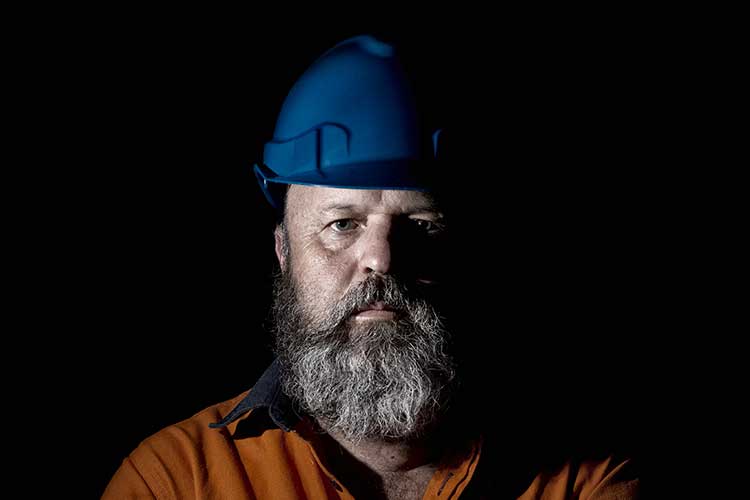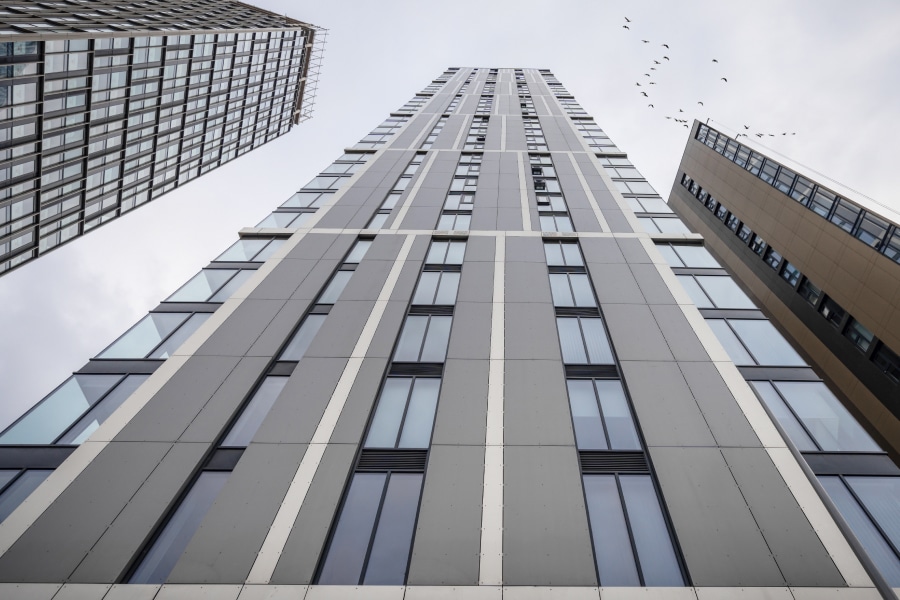Illustration by Lindsay Gruetzmacher
After more than a year of upheaval during the ongoing COVID-19 pandemic, mental health issues are on the rise. Depression has tripled among U.S. adults, and researchers are tracking higher levels of sleep issues, alcohol consumption, substance abuse and aggravated chronic health conditions.
On the job, an employee’s poor mental health can have a big impact, affecting performance, productivity and engagement, according to the Centers for Disease Control and Prevention (CDC). One study found that depression can impede a person’s ability to finish physical tasks at work 20% of the time, according to the CDC.
But mental health woes can be difficult to tackle, thanks in large part to the stigma attached to them. That hurdle is especially high in the construction industry.
“It still suffers from being a male-dominated, strong-willed, pull-yourself-up-by-your-bootstraps type of culture,” said Steve Williams, president of Ecto HR, a consulting firm that specializes in construction. “It’s not, generally speaking, as open to talking about those challenges and acknowledging them.”
But, among his client base, Williams has seen plenty of evidence that the pandemic has taken its toll. Mental health is something that construction companies need to address, he said.
Here are six ways for construction companies to bolster their mental health benefits and boost their employees’ well-being.
Get an EAP—and promote it
If you don’t have an employee assistance program (EAP), it might be time to invest in one, Williams said. EAPs confidentially connect employees to resources that can help them address mental health concerns, substance abuse, family problems and financial issues.
They are fairly inexpensive for business owners—about 75 cents to $2 per employee per month, according to the Society for Human Resource Management (SHRM). EAPs often can be added on via a company’s health insurance broker, Williams said.
If you already have one, now is the time to boost its visibility. Many employees aren’t even aware that their employer offers an EAP or—if they do know about it—don’t use it, Williams said. The average utilization rate hovers around 4.5%, according to the International Employee Assistance Professionals Association.
As you spread the word, it’s important to combat a common misconception about EAPs and emphasize that all calls and treatment remain absolutely confidential. “EAPs require ongoing, continuous marketing and reinforcement that it’s not employer controlled,” Williams said. “That it’s 100% anonymous and independent.”
Coach leaders
Supervisors and managers often are the first to notice something off among their workers. That’s why companies must train them on how to spot substance abuse and mental health challenges and steer employees toward the appropriate services, Williams said. Health insurance carriers also do a good job at providing employers with guidance.
For longtime construction executive Michael Bustin, identifying when an employee is struggling requires getting to know them. “From a leadership management perspective, you have to really understand and know your team and you have to recognize the challenges and issues,” said Bustin, who has worked in construction for 25 years and is currently global chief growth officer for Durasein, a manufacturer of solid surface materials and products.
Talk about it
Start stripping away the stigma by talking about mental health, Williams said. Publish statistics about the prevalence of mental health challenges in the company newsletter. Mention it during safety meetings.
“Just let people understand that the rate of mental illness is high in the United States and in construction,” Williams said. “And that it’s important to support each other and make it absolutely OK.”
Think mindfulness
Mindfulness is the practice of being present in the moment—focused on the task at hand, not other stressors. It can improve our mental health, and study after study also shows a correlation between mindfulness and safety on construction sites.
“Really successful safety programs will take a step back and teach people to be mindful,” said Kimberly Kayler, president of AOE, a consulting firm that works regularly with construction and engineering companies. “There’s a really good case to be made from the construction side of things about being mindful.”
Bringing mindfulness into the lives of workers can be as simple as subsidizing subscriptions to mindfulness apps like Calm or Headspace.
Mindfulness practices also can be incorporated into safety meetings or morning stretch and flex programs, said Kayler, a yoga teacher who also leads presentations on a variety of topics—including corporate mindfulness—to construction and engineering companies.
For workers who might be turned off by the “new age” aspects of mindfulness, give it another label. “If mindfulness doesn’t work or freaks people out, then call it something else,” Kayler said. “Maybe it’s stress reduction, maybe it’s prioritization in this new hybrid world.”
But Kayler also cautions against making assumptions that hard-edged construction workers have no interest in mindfulness.
“I can have the most conservative engineer, who I wouldn’t think would be into mindfulness, will come after the session and hand me his mindfulness book that he’s reading,” Kayler said. “It’s been a lesson for me that you never know.”
Require PTO
Taking time off can boost your mental health benefits, but Williams sees too many superintendents, foremen and construction managers never taking vacation.
“They tend to be people who are wired, and they get in these projects and as the project gets closer and closer to completion, they feel like they can’t disconnect,” Williams said.
In his own office, when it comes to paid time off, Williams requires people to take a consecutive week off at least once a year, and he recommends that his clients do the same. If workers balk at taking vacation, let them know you’ll be providing job coverage so the work gets done.
Lead with empathy
Bustin has seen the impacts of mental health challenges among his own family and friends. And that is, in part, why he leads with an empathy-first approach—being thoughtful about the struggles that his employees are facing and finding the best way to support them. At the same time, it’s simply what a good leader should do, he said.
“The hardest thing about business is people, really,” he said. “And you have to be empathetic. For me, I’ve been in their shoes before. I know people make mistakes, and I know people have issues. … A successful leader relies on their team, counts on their team and trusts their team. And leaders are in place to help others be successful.”












